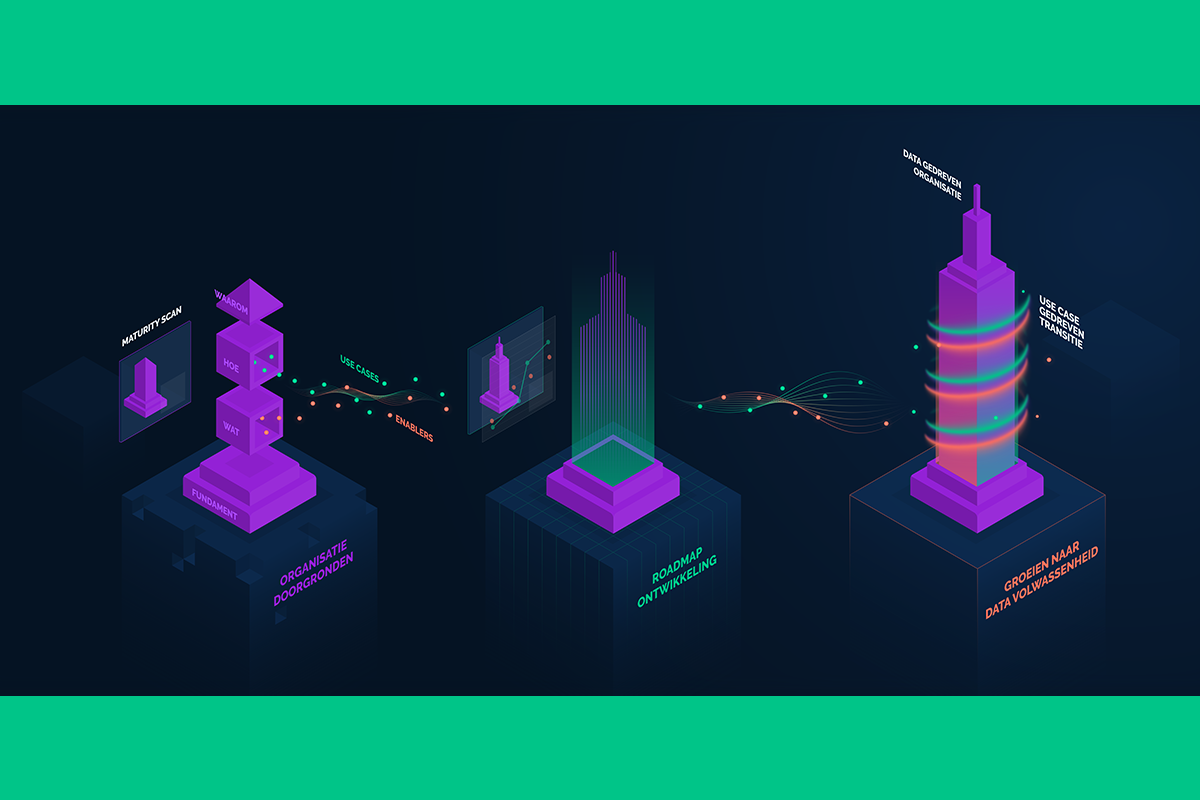[vc_row type=”in_container” full_screen_row_position=”middle” scene_position=”center” text_color=”dark” text_align=”left” overlay_strength=”0.3″ shape_divider_position=”bottom” bg_image_animation=”none”]
Transition to a data-driven organization.
[/nectar_highlighted_text]
The model is applicable to any organization and assumes a use-case driven transition.
Experience shows that a use-case driven approach ensures growth, towards a data driven organization as the transition becomes tangible immediately.
And by making it tangible, you immediately create support.
TheData Transition Model has three phases that are explained below: organization mapping, roadmap development and growth in data maturity.
[divider line_type=”No Line” custom_height=”10″][image_with_animation image_url=”6749″ alignment=”center” animation=”Fade In” border_radius=”none” box_shadow=”none” max_width=”100%”][divider line_type=”No Line” custom_height=”10″]
Mapping the organization
The first stage is organization mapping: getting to the bottom of the organization.
Why does an organization want to become more data driven?
And where does the organization want to go?
It is important to start with the motivation for a data-driven organization.
Once this is mapped, the current status is examined.
Where does the organization currently stand?
Because we do not want to duplicate work, and want to build on the data initiatives and building blocks already in place, we first perform a maturity scan.
With this we estimate where the organization is positioned within the maturity model we have developed.
This model makes it possible to place an organization along different axes to estimate which data-related developments an organization has already gone through.
After this, tangible use cases are defined to achieve the ultimate goal.
In this phase, we also identify the enablers needed to realize the use cases.
Enablers are technical and business-related resources needed to execute a use-case.
Drawing up the plan
The roadmap is developed in the second phase.
In it, we determine the impact of the use cases together with the organization.
Then a combination of use cases and enablers are selected, which together will realize the growth in data maturity.
This results in concrete actions over time, each of which gets its own place on the roadmap.
Initiating the data-driven movement
In the final phase, the transition to a data-driven organization becomes tangible.
Realizing the use-cases and enablers in the roadmap gets the organization moving and creates support for the transition.
With the completion of each use-case, the organization moves along 1 or more axes in the maturity model, and with each step taken, the organization grows in data maturity.
Are you ready to grow?
[divider line_type=”No Line” custom_height=”10″]
[vc_row type=”in_container” full_screen_row_position=”middle” scene_position=”center” text_color=”dark” text_align=”left” overlay_strength=”0.3″ shape_divider_position=”bottom” bg_image_animation=”none”]
QUESTIONS?
[/nectar_highlighted_text]



